-
 Bitcoin
Bitcoin $107,247.2038
-0.18% -
 Ethereum
Ethereum $2,424.7947
0.34% -
 Tether USDt
Tether USDt $1.0003
-0.02% -
 XRP
XRP $2.1171
-3.33% -
 BNB
BNB $645.6618
0.06% -
 Solana
Solana $141.5898
-1.32% -
 USDC
USDC $0.9998
0.00% -
 TRON
TRON $0.2710
-0.41% -
 Dogecoin
Dogecoin $0.1602
-2.99% -
 Cardano
Cardano $0.5553
-2.28% -
 Hyperliquid
Hyperliquid $36.3019
-2.42% -
 Bitcoin Cash
Bitcoin Cash $491.7212
2.04% -
 Chainlink
Chainlink $13.0810
-0.23% -
 Sui
Sui $2.6080
-5.06% -
 UNUS SED LEO
UNUS SED LEO $9.0040
-0.05% -
 Stellar
Stellar $0.2350
-3.06% -
 Avalanche
Avalanche $17.2294
-2.31% -
 Toncoin
Toncoin $2.8075
-1.05% -
 Shiba Inu
Shiba Inu $0.0...01121
-3.43% -
 Litecoin
Litecoin $84.2215
-0.32% -
 Hedera
Hedera $0.1429
-4.88% -
 Monero
Monero $312.2199
-0.90% -
 Dai
Dai $0.9997
-0.01% -
 Ethena USDe
Ethena USDe $0.9999
-0.02% -
 Polkadot
Polkadot $3.2973
-2.60% -
 Bitget Token
Bitget Token $4.4742
3.12% -
 Pi
Pi $0.5631
-10.10% -
 Uniswap
Uniswap $6.7817
-2.06% -
 Pepe
Pepe $0.0...09252
-3.74% -
 Aave
Aave $251.3830
-2.24%
Is there a main force bottom-fishing with a long lower shadow at a low position?
A long lower shadow at a low position may signal main force bottom-fishing, hinting at potential reversal amid selling pressure and hidden accumulation.
Jun 26, 2025 at 10:56 pm

Understanding the Candlestick Pattern: Long Lower Shadow at a Low Position
A long lower shadow candlestick pattern is often seen as a potential reversal signal in technical analysis. When this pattern appears at a low position, it suggests that sellers pushed prices down during the session, but buyers eventually stepped in and pulled the price back up near the opening level. This can indicate underlying strength or accumulation by major players, sometimes referred to as "main force bottom-fishing."
In the cryptocurrency market, where volatility is high and sentiment-driven movements are common, such patterns are closely watched by traders for signs of institutional buying or large-volume accumulation.
Long lower shadows typically occur when there's a sharp decline followed by a recovery in price within the same candle period.
What Does “Main Force Bottom-Fishing” Mean?
The term "main force bottom-fishing" originates from traditional markets and refers to large investors or institutions entering a downtrend to buy undervalued assets. In crypto, this concept applies to whales or smart money players who detect value in an oversold asset and start accumulating quietly.
These players usually operate with significant capital and may use tactics like wash trading, spoofing, or placing iceberg orders to hide their true intent. The presence of a long lower shadow might be a clue that such entities are starting to accumulate at current levels.
- Volume spikes accompanying the long lower shadow can further confirm main force participation.
- Absence of strong follow-through in the next few candles may suggest hesitation or testing of support levels.
Identifying Institutional Accumulation Patterns
To determine if a long lower shadow at a low position is caused by main force bottom-fishing, traders often look for other supporting signals:
- Volume anomalies: A sudden spike in volume without a proportional price increase can hint at hidden buying.
- Order book depth: A thick bid wall on exchanges may show that large buyers are absorbing sell pressure.
- Price rejection: If the price repeatedly tests a certain level and bounces, it indicates demand absorption.
Accumulation phases tend to show consolidation after a downtrend, with multiple candlesticks forming a base before a potential rally.
It’s crucial to cross-check these signals with other tools like on-chain analytics or order flow data to better assess whether the long lower shadow represents genuine accumulation.
Technical Indicators That Confirm Main Force Activity
Using additional indicators can help validate whether a long lower shadow reflects real buying interest:
- On-Balance Volume (OBV): Rising OBV during sideways or slightly rising prices can signal institutional inflows.
- Smart Money Commitment (SMC) Concepts: These include identifying key levels like "order blocks," "liquidity sweeps," and "fair value gaps."
- Glassnode Metrics: Tools like the "Exchange Inflow" or "Holders' Net Position Change" can reflect whether large holders are increasing exposure.
- Volume Profile can highlight areas where large trades have been executed.
- Depth maps provide insights into bid/ask imbalances that could reveal whale behavior.
When these indicators align with the candlestick pattern, it strengthens the case for main force bottom-fishing.
How to Trade the Long Lower Shadow Signal
Trading based on a long lower shadow requires patience and confirmation. Here’s how to approach it methodically:
- Wait for confirmation: Look for bullish candlesticks following the shadow to confirm strength.
- Set entry points: Enter when the price breaks above the midpoint of the long lower shadow candle.
- Use tight stop-loss: Place a stop below the shadow’s low to limit downside risk.
- Monitor volume: Increasing volume on the upside confirms buying pressure.
Position sizing should remain conservative unless further confirmation emerges through higher time frame breakouts or trendline violations.
Traders must also consider the broader context—like macroeconomic conditions, exchange listings, or regulatory news—that might influence the pattern's reliability.
Frequently Asked Questions
Q: Can a long lower shadow always be trusted as a reversal signal?
No. While it can indicate potential reversals, especially at key support zones, it should not be used in isolation. Confirmation from volume, order book dynamics, and other technical indicators is essential.
Q: How do I differentiate between retail panic selling and institutional accumulation using candlesticks?
Retail panic often results in large red candles with long upper or lower shadows and high volume. Institutional accumulation tends to show controlled price action, with repeated tests of lows and subtle increases in bid-side liquidity.
Q: What time frames are best for analyzing long lower shadow patterns?
Higher time frames like 4-hour, daily, or weekly charts offer more reliable signals. Shorter time frames can be noisy and prone to manipulation, especially in less liquid altcoins.
Q: Is there a difference between a hammer and a long lower shadow candle?
Yes. A hammer specifically refers to a candle with a long lower shadow, small body near the top of the range, and little or no upper shadow. A long lower shadow can appear in various forms, including spinning tops or inverted hammers, depending on the close relative to the open.
Disclaimer:info@kdj.com
The information provided is not trading advice. kdj.com does not assume any responsibility for any investments made based on the information provided in this article. Cryptocurrencies are highly volatile and it is highly recommended that you invest with caution after thorough research!
If you believe that the content used on this website infringes your copyright, please contact us immediately (info@kdj.com) and we will delete it promptly.
- CESS, TGE, and Decentralized AI: A New Era for Data Sovereignty
- 2025-06-27 03:52:13
- Dogecoin's Comeback vs. Little Pepe's 50x Potential: Where's the Smart Money Going?
- 2025-06-27 02:50:12
- Cryptos, Troller Cat, and ROI: A New Era of Meme Coin Investing?
- 2025-06-27 02:32:05
- USDT on TRON: Stablecoin Supremacy in the Digital Age
- 2025-06-27 03:52:13
- Trump, Crypto, and Stablecoins: A New York Minute on the Digital Frontier
- 2025-06-27 02:54:00
- WLFI Token's Transferability, USD1 Stablecoin Audit, and Trump's Crypto Play: What's the Deal?
- 2025-06-27 03:56:47
Related knowledge
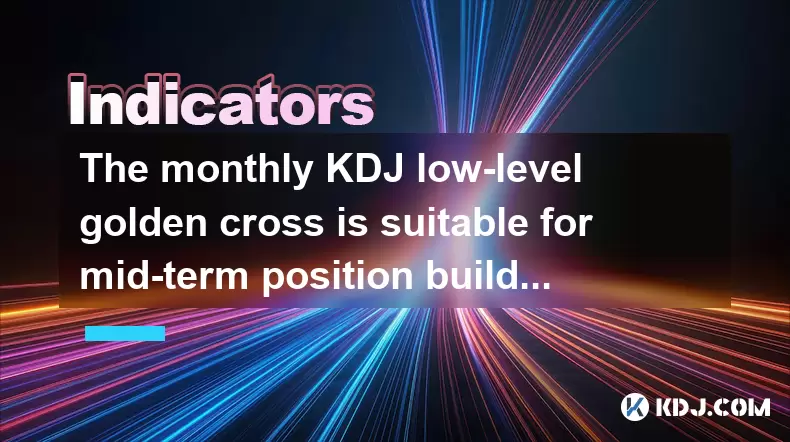
The monthly KDJ low-level golden cross is suitable for mid-term position building?
Jun 27,2025 at 03:14am
Understanding the Monthly KDJ IndicatorThe KDJ indicator, also known as the stochastic oscillator, is a momentum tool widely used in technical analysis within the cryptocurrency market. It consists of three lines: the K line, the D line, and the J line. These lines help traders identify overbought or oversold conditions, potential trend reversals, and e...
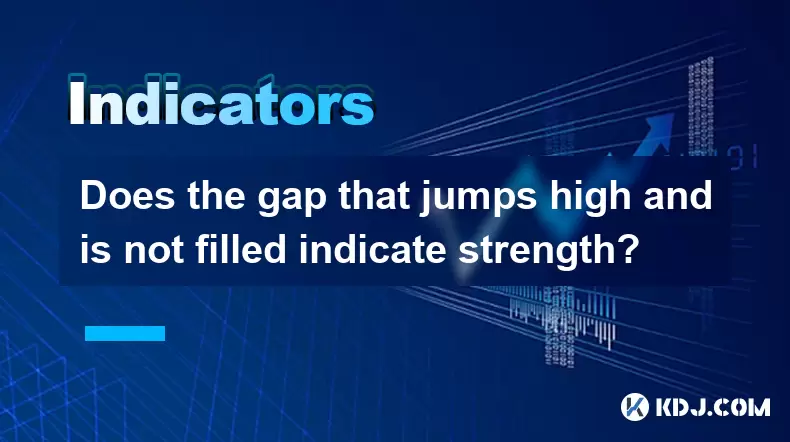
Does the gap that jumps high and is not filled indicate strength?
Jun 26,2025 at 11:36pm
Understanding the Concept of Gaps in Cryptocurrency ChartsIn the world of cryptocurrency trading, gaps refer to areas on a price chart where the price of an asset jumps significantly up or down, leaving no trading activity between two specific points. These gaps typically occur due to after-hours news, market sentiment shifts, or sudden influxes of buy/...
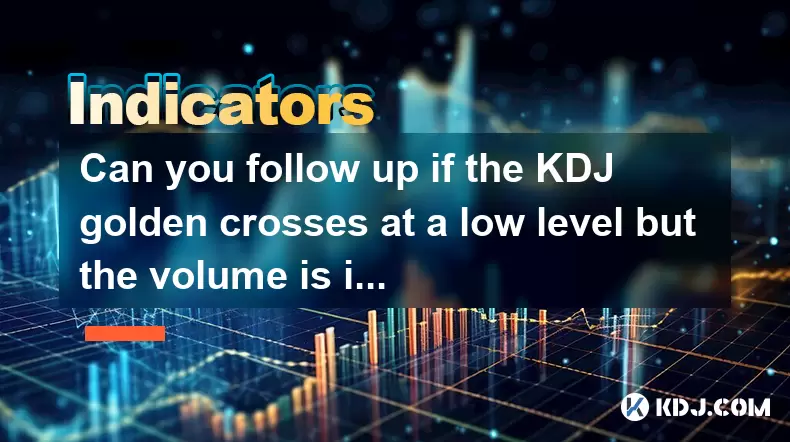
Can you follow up if the KDJ golden crosses at a low level but the volume is insufficient?
Jun 27,2025 at 12:01am
Understanding the KDJ Indicator in Cryptocurrency TradingThe KDJ indicator, also known as the stochastic oscillator, is a popular technical analysis tool used by cryptocurrency traders to identify potential buy and sell signals. It consists of three lines: the %K line, the %D line (which is a moving average of %K), and the %J line (a projection of the t...
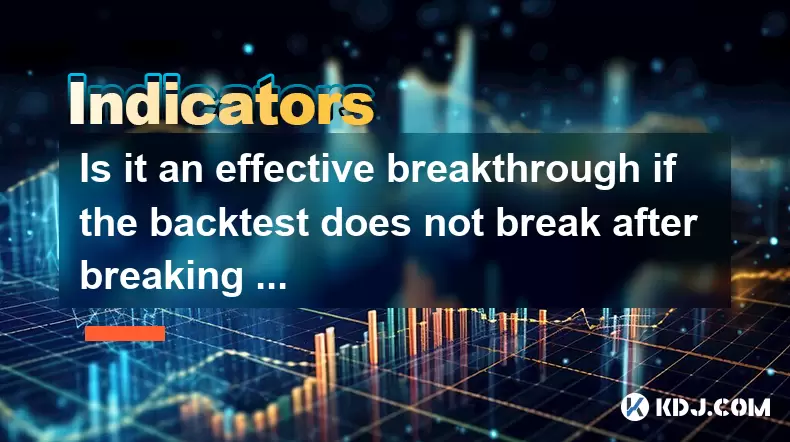
Is it an effective breakthrough if the backtest does not break after breaking through the neckline?
Jun 26,2025 at 10:08pm
Understanding the Role of Blockchain in Secure TransactionsBlockchain technology is at the heart of secure cryptocurrency transactions. Each block contains a list of transactions, and once recorded, altering past blocks becomes nearly impossible without network consensus. This immutability ensures that once a transaction is confirmed, it cannot be rever...
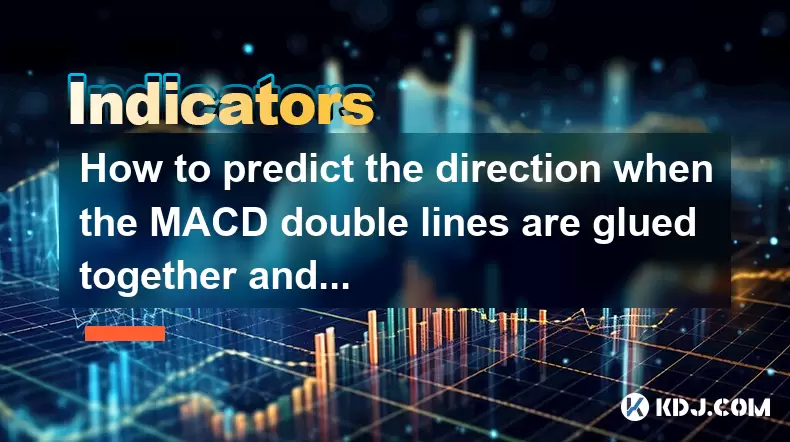
How to predict the direction when the MACD double lines are glued together and not separated?
Jun 27,2025 at 04:30am
Understanding the MACD Indicator and Its ComponentsThe Moving Average Convergence Divergence (MACD) is a popular technical indicator used in cryptocurrency trading. It consists of three main components: the MACD line, the signal line, and the histogram. The MACD line is calculated by subtracting the 26-period Exponential Moving Average (EMA) from the 12...
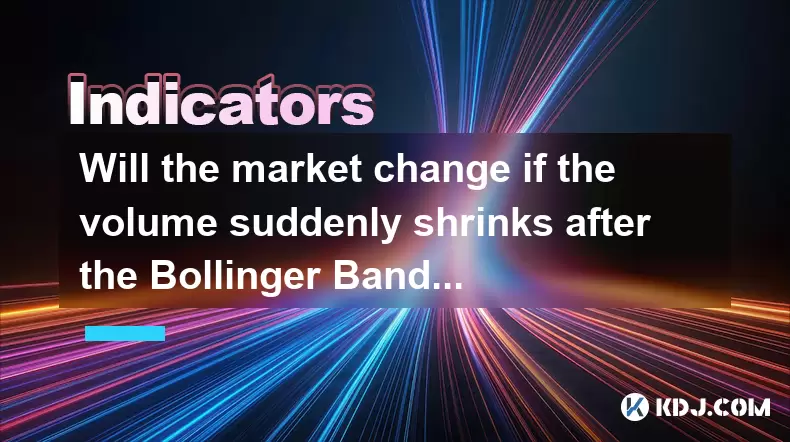
Will the market change if the volume suddenly shrinks after the Bollinger Bands open?
Jun 26,2025 at 09:56pm
Understanding the Bollinger Bands MechanismBollinger Bands are a widely used technical analysis tool that consists of a moving average and two standard deviation lines plotted above and below it. These bands dynamically adjust to price volatility, expanding during periods of high market activity and contracting when volatility decreases. Traders use thi...

The monthly KDJ low-level golden cross is suitable for mid-term position building?
Jun 27,2025 at 03:14am
Understanding the Monthly KDJ IndicatorThe KDJ indicator, also known as the stochastic oscillator, is a momentum tool widely used in technical analysis within the cryptocurrency market. It consists of three lines: the K line, the D line, and the J line. These lines help traders identify overbought or oversold conditions, potential trend reversals, and e...

Does the gap that jumps high and is not filled indicate strength?
Jun 26,2025 at 11:36pm
Understanding the Concept of Gaps in Cryptocurrency ChartsIn the world of cryptocurrency trading, gaps refer to areas on a price chart where the price of an asset jumps significantly up or down, leaving no trading activity between two specific points. These gaps typically occur due to after-hours news, market sentiment shifts, or sudden influxes of buy/...

Can you follow up if the KDJ golden crosses at a low level but the volume is insufficient?
Jun 27,2025 at 12:01am
Understanding the KDJ Indicator in Cryptocurrency TradingThe KDJ indicator, also known as the stochastic oscillator, is a popular technical analysis tool used by cryptocurrency traders to identify potential buy and sell signals. It consists of three lines: the %K line, the %D line (which is a moving average of %K), and the %J line (a projection of the t...

Is it an effective breakthrough if the backtest does not break after breaking through the neckline?
Jun 26,2025 at 10:08pm
Understanding the Role of Blockchain in Secure TransactionsBlockchain technology is at the heart of secure cryptocurrency transactions. Each block contains a list of transactions, and once recorded, altering past blocks becomes nearly impossible without network consensus. This immutability ensures that once a transaction is confirmed, it cannot be rever...

How to predict the direction when the MACD double lines are glued together and not separated?
Jun 27,2025 at 04:30am
Understanding the MACD Indicator and Its ComponentsThe Moving Average Convergence Divergence (MACD) is a popular technical indicator used in cryptocurrency trading. It consists of three main components: the MACD line, the signal line, and the histogram. The MACD line is calculated by subtracting the 26-period Exponential Moving Average (EMA) from the 12...

Will the market change if the volume suddenly shrinks after the Bollinger Bands open?
Jun 26,2025 at 09:56pm
Understanding the Bollinger Bands MechanismBollinger Bands are a widely used technical analysis tool that consists of a moving average and two standard deviation lines plotted above and below it. These bands dynamically adjust to price volatility, expanding during periods of high market activity and contracting when volatility decreases. Traders use thi...
See all articles
























































































